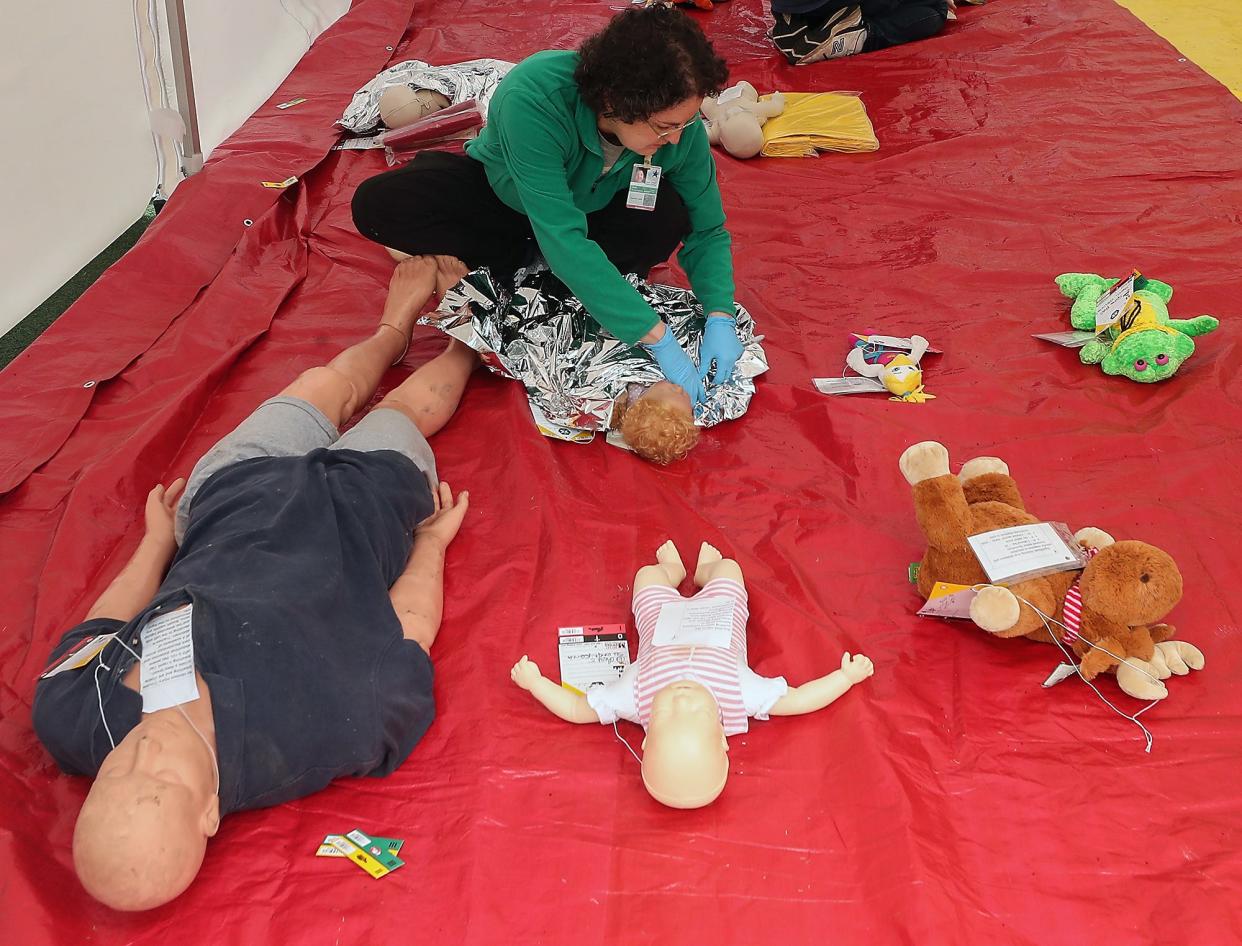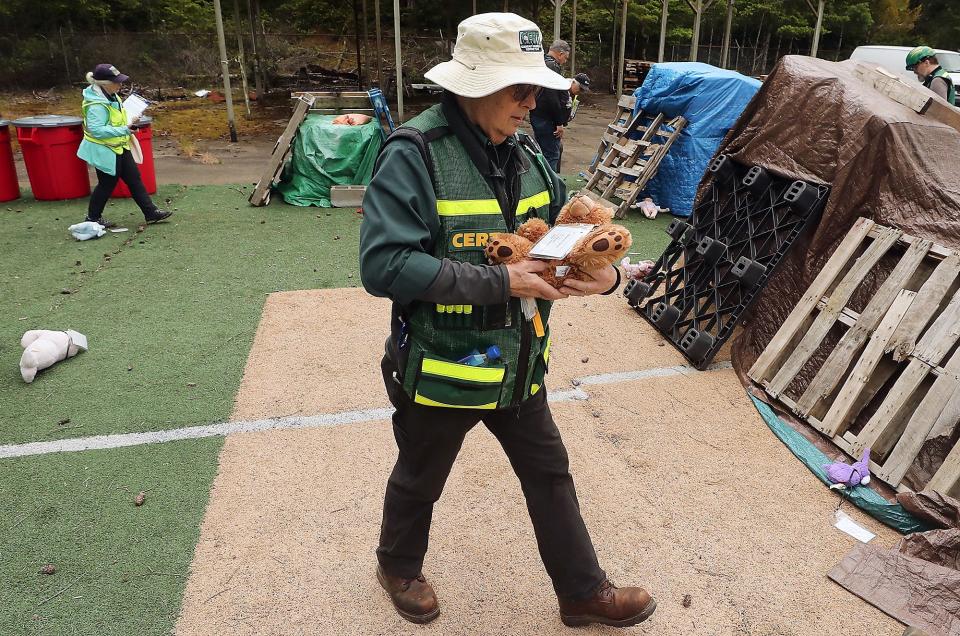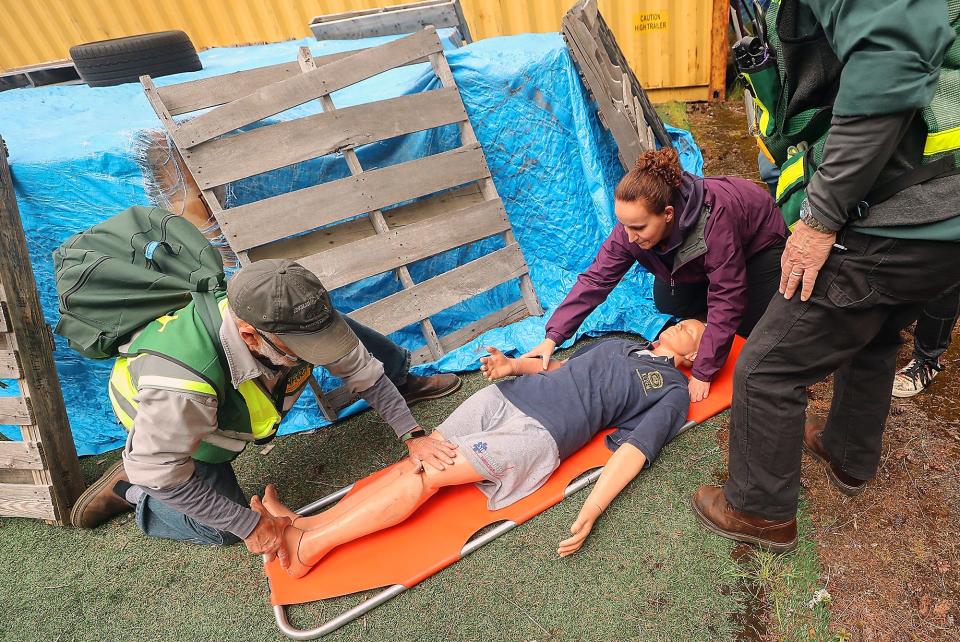Disaster responders test plans to help isolated Kitsap neighborhoods during earthquake drill

Volunteers hoisted stretchers onto their shoulders on Friday, but the stretchers were unusually light. They carried teddy bears, plush toys and fluffy stuffed reindeer; they carried plastic baby dolls and mannequins in 90s polo tees.
Each "survivor" was strung with green, yellow and red tags, denoting where in the medical triage tent for volunteers to lay them down.
Medics and disaster-trained personnel rushed to save the teddy bears from their injuries.
The simulation on Friday was part of an earthquake response exercise by the Kitsap County Department of Emergency Management planned in coordination with the Federal Emergency Management Agency's (FEMA) Cascadia Rising initiative. The initiative calls for earthquake response drills in states along the Cascadia Subduction Zone (CSZ), a seismic-prone fault line that runs from northern California to Vancouver Island.
KCDEM staff trained the 35 volunteers on how to safely transport injured residents in the event of a catastrophic earthquake. The agency used stuffed animals and plastic dolls in lieu of medical manikins, which the agency does not have.

Before the bears were triaged, the agency trained volunteers on taking inventory of supply kits and coordinating response procedures in the event of catastrophic earthquake damage.
Because of the CSZ and other faults in Puget Sound, Kitsap County's risk for a major earthquake is high. A high-magnitude earthquake would likely obstruct major freeways, isolating the peninsula from the rest of Washington for days. Scant roadways between Kitsap County localities could create what KCDEM calls "micro-islands" — neighborhoods that may quickly be cut off areas because of inadequate road access.
For each micro-island, KCDEM has anticipated where people might congregate and distribute supplies in the case of emergency — like large parking lots in accessible areas — and marked them in the agency's earthquake-response field guide. KCDEM expects that these sites will become each micro-island's locations for aircrafts to drop off supplies after a seismic event.
In the event of an earthquake, the field guide will accompany the drop-off materials, which will include packages to establish a shelter station, a hygiene station and a first-aid station. Field guides will also detail first-aid steps and other tips to stay safe after an emergency.
Some volunteers at the exercise had receivers and antennae for transmissions via Amateur Radio, also known as ham radio. This radio system would allow residents stuck inside micro-islands to communicate beyond the micro-island to call for aid.

Preparing in advance
"Really, the job we have is that we need to prepare all 270,000 people of Kitsap County to be safe in a major earthquake. This exercise is the nuts and bolts," said Dave Rasmussen, KCDEM public information officer.
Earthquakes occur nearly every day in Washington state. Most are too small or too short to be felt. Any earthquake above a 4.0 magnitude has the potential to damage roads and buildings, but most earthquakes considered to be major score above 7.0. These high-magnitude earthquakes are incredibly rare, occurring zero to two times per year in the United States.
Rasmussen strongly encouraged residents of Kitsap County to have their own stock of non-perishable food and first-aid supplies in the event of an earthquake. KCDEM promotes "Two Weeks Ready" guidance, advocating for households to keep at least two weeks of materials in the event of a catastrophic earthquake.
Friday's exercise was just the first step in KCDEM's efforts to prepare Kitsap County residents for high-magnitude seismic events. Over the next few years, KCDEM plans to hold more emergency-response exercises and informational presentations in neighborhoods across the peninsula.
KCDEM expects to release an online document of the field guide in early July.
This article originally appeared on Kitsap Sun: Responders test plans to reach isolated neighborhoods during Cascadia drill

